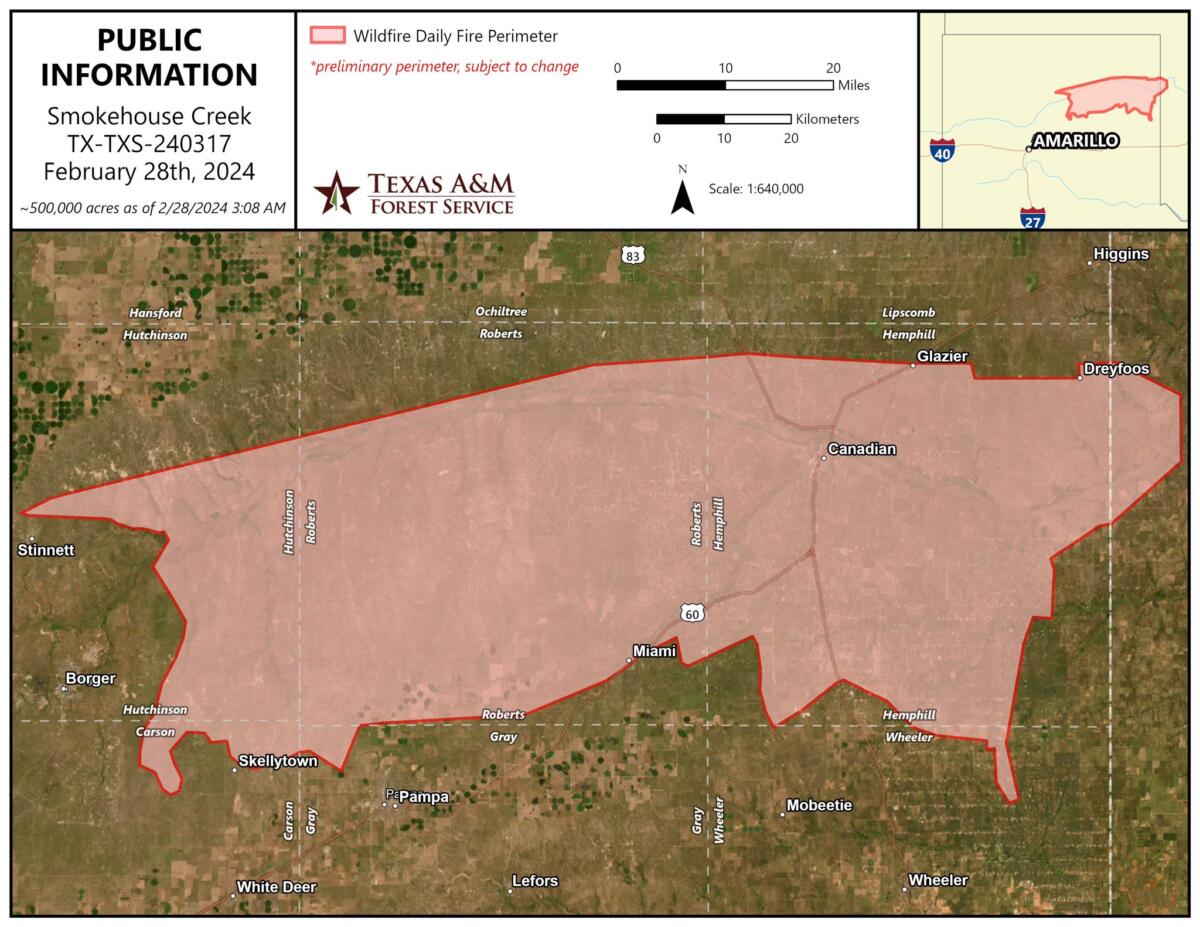The Smokehouse Creek fire has become a devastating chapter in the history of Texas, marking one of the largest wildfires in the state's recorded history. As flames engulfed the town of Stinnett, residents like Danny Phillips faced unimaginable loss and destruction. With their neighborhoods reduced to ashes, families returned home to find their lives forever altered. In this article, we will explore the harrowing experiences of those affected by the fire, the ongoing firefighting efforts, and the broader implications for communities in the region.
The Smokehouse Creek fire has left a significant mark on the local landscape, with its impacts felt not only by the residents of Stinnett but also across the Texas Panhandle and into Oklahoma. As the fire raged, it claimed lives, destroyed homes, and devastated the land. Firefighters have been working tirelessly to contain the blaze, but the challenges remain immense due to unpredictable weather conditions and the sheer scale of the fire.
In this exploration of the Smokehouse Creek fire, we will delve into the stories of those who have suffered losses, the response from local and federal authorities, and the lessons learned from this tragic event. By understanding the magnitude of the crisis, we can begin to address the needs of the affected communities and work towards recovery and rebuilding efforts.
What You Will Learn
- The personal stories of Stinnett residents affected by the wildfire.
- The scale and containment efforts of the Smokehouse Creek fire.
- The impact of the fire on local ecosystems and agriculture.
- Government response and support for affected communities.
The Devastating Fire and Its Aftermath
The Smokehouse Creek fire has become a tragic symbol of nature's fury, affecting the small town of Stinnett, Texas. With a population of approximately 1,600, the community found itself battling an inferno that threatened their homes and livelihoods. Residents were forced to evacuate, watching helplessly as flames consumed their neighborhoods. The aftermath of the fire revealed a landscape scarred by destruction, with melted street signs and charred vehicles marking the remnants of what was once a vibrant community.
As families returned to Stinnett after the evacuation, they were met with horrific sights. Many homes had been reduced to mere piles of ash, and some residents found their lives altered forever. The emotional toll of witnessing their community burn was compounded by the loss of property and the uncertainty of what the future held. The resilience of the residents, however, has shone through as they begin the long process of rebuilding their lives.
Firefighting Efforts and Community Response
Firefighters from various regions have rallied to combat the Smokehouse Creek fire. Their efforts have included battling the flames, protecting structures, and working to contain the spread of the fire. Despite the challenges posed by shifting weather conditions, including strong winds and dry air, these brave individuals have remained committed to their mission. The arrival of snow has provided some relief, allowing crews to focus on hot spots and prevent reignition.
Local and federal authorities have also stepped in to support the affected communities. President Biden has pledged federal assistance, ensuring that resources are allocated to help those impacted. The Federal Emergency Management Agency (FEMA) has stepped in, promising to reimburse Texas and Oklahoma for emergency costs, a crucial lifeline for communities struggling to cope with the aftermath of the fire.
The Human Cost of the Fire
The human toll of the Smokehouse Creek fire has been tragic, with lives lost and families forever changed. Two women, Cindy Owen and Joyce Blankenship, were confirmed as victims of the blaze. Their stories serve as a stark reminder of the fire's devastating impact on the community. Many residents are still reeling from the shock of the events, grappling with grief and loss.
As recovery efforts continue, it is essential to acknowledge the emotional and psychological toll on survivors. The trauma of losing one's home or witnessing the destruction of a community can have lasting effects. Support systems and resources are needed to help the residents of Stinnett heal and rebuild their lives.
Looking Ahead: Recovery and Resilience
The Smokehouse Creek fire has taught valuable lessons about preparedness and resilience in the face of natural disasters. As communities work towards recovery, it is crucial to reflect on the experiences and challenges faced during this crisis. Firefighters, community leaders, and residents are banding together to rebuild what was lost, demonstrating the strength of the human spirit.
In the aftermath of this tragedy, it is vital for local authorities to assess and improve wildfire response strategies. Enhanced communication, evacuation plans, and community engagement will be essential in preparing for future disasters. By learning from the Smokehouse Creek fire, Stinnett and surrounding areas can strive for a safer and more resilient future.
The Role of Community in Recovery
Community support will play a crucial role in the recovery process. Neighbors are coming together to aid one another, offering resources, shelter, and emotional support. Local organizations and volunteers have stepped up to provide assistance, demonstrating the power of community solidarity in times of crisis.
As recovery efforts gain momentum, it is essential for residents to remain hopeful and proactive. Rebuilding will take time, but with determination and collaboration, the community of Stinnett can emerge stronger than before. This wildfire may have brought destruction, but it has also ignited unity and resilience among the residents.



